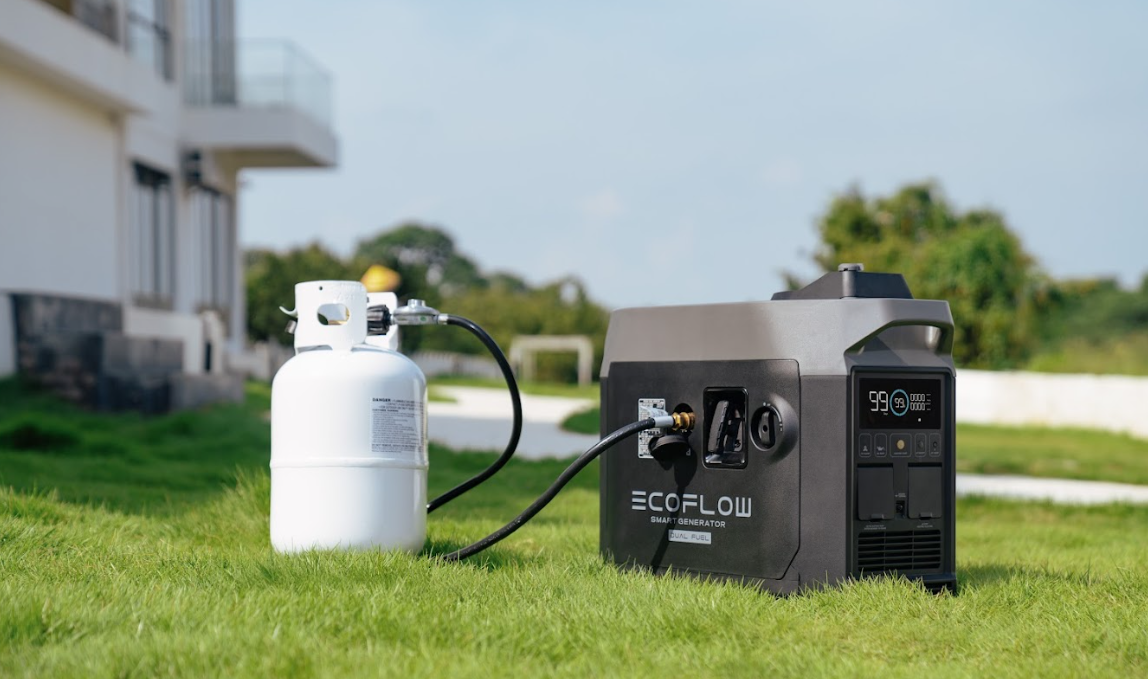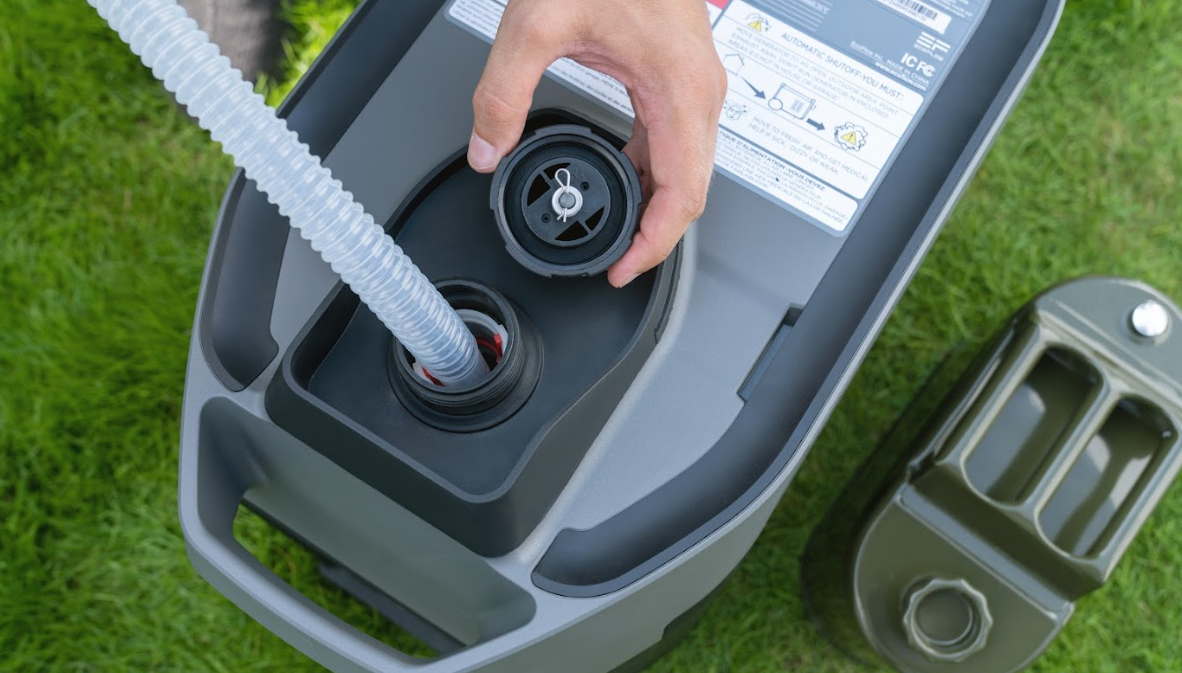Hurricane Generator Sizing: A Guide for Reliable Home Power During the Storm
Key Takeaway
Spending time to properly determine your power requirements is the most critical part of obtaining dependable home emergency generator power in a hurricane. A generator that is too small will be under constantly overloaded, possibly harming the generator and your appliances. A generator that is too large is more expensive to purchase and burns more fuel than it needs to. If you are unsure, or your power needs are complex, you can consult a professional electrician. They will be able to advise you precisely how much wattage is needed and install it safely.
Power loss during a hurricane is not just frustrating—it's potentially deadly. Choosing the correct size generator keeps your family safe, prevents food spoilage, and powers life-sustaining medical equipment. This guide walks you through correctly sizing your home power backup, keeping you from costly mistakes that leave you in the dark.
What's Your Power Needs During an Outage
You need to know what you'll power before you go generator shopping. This will help you pick the right size and not buy too much or too little.
Decide What to Power
First, make a list of what you absolutely must run during an outage. For most people, the necessities are the refrigerator (to save your food), a well pump (if you have one), and any critical medical equipment. A few lights and maybe the furnace fan for heat are also important.
Next, think about conveniences. Things like a microwave, TV, or computer are nice to have but will increase the generator size you need. A central air conditioning unit uses a huge amount of electricity and is usually too much for a standard home generator to handle.
Find Each Appliance's Wattage
Every electrical device uses a certain amount of power, measured in watts. Appliances with motors, like your refrigerator or furnace fan, have two numbers: a high "starting wattage" they need for a second to kick on, and a lower "running wattage" they use to operate continuously.
You can find these numbers on a sticker on the appliance itself, in the user manual, or with an online search. Go through your list, write down the wattage for each item, and be sure you have both the starting and running watts. This list is the key to choosing the right generator.
Types of Generators: Matching Your Needs to the Right Solution
After you know how much power you need, you can look at the different kinds of generators available. Each type has its own pros and cons, and your choice will depend on your budget and specific situation.
Portable Generators
This is the classic generator that most would consider for emergency purposes. Portable generators are less expensive, can be relocated to where they are required, and typically are powered by gasoline or propane. They are suitable for powering essentials such as a refrigerator, a few lights, and chargers for your equipment.
The drawback is they're loud and must be repeatedly refueled. Worst of all, they give off lethal carbon monoxide gas. You have to use them outside, at least 20 feet from your house, with exhaust pointing away from windows and doors. They're a solid choice for small power during brief outages.
Standby (Whole-House) Generators
A standby generator could be a permanent solution for your home. It's installed outside and connects to your natural gas or propane line. The best part is that it turns on automatically within seconds of the power going out, so you don't have to do anything. These units are powerful enough to run your entire house, or at least most of it, providing a seamless flow of electricity. While the initial cost and professional installation are higher, they offer great peace of mind and convenience for long outages.


Inverter Generators
Inverter generators are a special type of portable generator. They are much quieter and more fuel-efficient than standard models. They also produce a very stable electrical current, often called "clean power," which is safe for sensitive electronics like computers, TVs, and smartphones. They typically don't have as much power as a large standby generator, but they are an excellent option if you want quiet operation and need to protect your valuable electronics.
Solar Generators (Portable Power Stations with Solar Charging)
A solar generator is a clean and silent backup power option. The system combines a large battery, called a portable power station, with solar panels that recharge it with sunlight. Since they produce no fumes or noise, they are safe to use indoors. They are perfect for running smaller appliances like lights, fans, medical devices, and charging phones and laptops.
A solar generator might not power your entire house like a large gas generator can, and you depend on sunlight to recharge the battery. The initial cost can be higher, but you never have to buy fuel, and they require very little maintenance.
The ECOFLOW DELTA series exemplifies this category. The DELTA 2 (1,024Wh capacity) powers essentials for 6–12 hours, while the DELTA Pro (3.6kWh) supports higher-demand appliances. Both feature X-Stream fast charging and accept up to 500W (DELTA 2) or 1,600W (DELTA Pro) of solar input, recharging fully in 2–4 hours with compatible panels. As battery-powered units, they require zero fuel and produce no emissions—perfect for hurricane-prone areas where noise and fumes pose risks.
The Sizing Process: Step-by-Step Calculation for Your Generator
Now that you have your appliance list prepared, it's time to do some math. This will inform you precisely how big your generator should be so that you don't purchase one too small or waste money on one too large.
Step 1: Add Up the Running Watts
First, look at your list and add up the running watts for everything you want to power at the same time. This total is the continuous power your generator must supply.
Example:
- Refrigerator: 800 watts
- Well Pump: 1000 watts
- Lights: 200 watts
- Total Running Watts = 2000 watts
Step 2: Determine Peak Starting (Surge) Watts
Next, look at your list again and find the appliance with the single highest starting wattage. This is usually your refrigerator or a window AC unit. You only need the highest single number because your appliances won't all start up at the exact same moment.
Add this starting wattage number to your total running watts from Step 1.
- Total Running Watts: 2000 watts
- Highest Starting Wattage (from the fridge): 2400 watts
- Total Required Watts = 4400 watts
Your generator must be able to produce at least 4400 watts to handle that initial power surge.
Step 3: Add a Safety Margin
Finally, add 10% to 20% to your total required watts. This extra power is a safety margin. It gives you some wiggle room for other small devices and prevents you from running the generator at its absolute maximum limit. A generator that's constantly maxed out will wear down faster and burn more fuel. This extra capacity ensures it runs smoothly and reliably for years to come.
Powering Through the Storm with Confidence
Preparing for a hurricane means taking proactive steps to protect your home and family. A properly sized generator is a pillar of that preparation, offering priceless peace of mind when the lights go out. Take the time to calculate your power needs, and understand the types of generators and sizes carefully; you're investing in safety and reliability.


FAQs about Hurricane Generator Sizing
Q1: Do I need a transfer switch to connect my generator to my house?
Yes, for safety and ease of use. A transfer switch, installed by an electrician, safely connects the generator to your home's circuit breaker panel. It prevents "backfeeding," which is dangerous when energy from your generator goes back to the utility lines and hurts or kills utility workers. It also lets you power things that are hardwired, like your well pump or furnace fan, without having to run a web of extension lines through your house.
Q2: How much fuel should I store for a portable generator?
It is a good rule of thumb to stockpile fuel for at least 3 to 5 days of use. Power can be off for a week or longer following a major hurricane, and gas stations will be closed or out of gas. Consult your generator manual to discover how many hours it operates on a gallon of fuel, and from that point calculate how much you'll require to operate your necessities. Store fuel in accepted containers and in a safe, well-ventilated location away from your home.
Q3: How can I safely run a portable generator in the rain during a hurricane?
Never operate a generator inside, in a garage, or on a covered porch. To protect it from rain, purchase a generator tent or cover that is specifically designed for that purpose. They are specially built canopies that are designed to keep rain off the generator but still allow proper ventilation and access to outlets. Don't use a simple tarp, which will block airflow, result in overheating, and be a fire risk.
Q4: What if you are unable to find the starting wattage of an appliance?
If you cannot locate the actual starting wattage on an older unit, as a general rule of thumb, you can multiply the running wattage by three. So if your freezer runs at 500 running watts, you would estimate its starting wattage at 1500 watts. Since this is an estimate, it is always better to add a bit of a margin if you need to make a guess.
Q5: Can a solar generator run my entire house?
Most portable solar generators are not powerful enough to run an entire house, especially not a central air conditioner or electric stove. They are great for running the necessities of the fridge, lights, fans, medical equipment, and phone and computer charging. A whole-house battery backup needs a much larger installed system by a professional with a huge battery bank and a huge array of solar panels on your roof, a different and more costly solution.